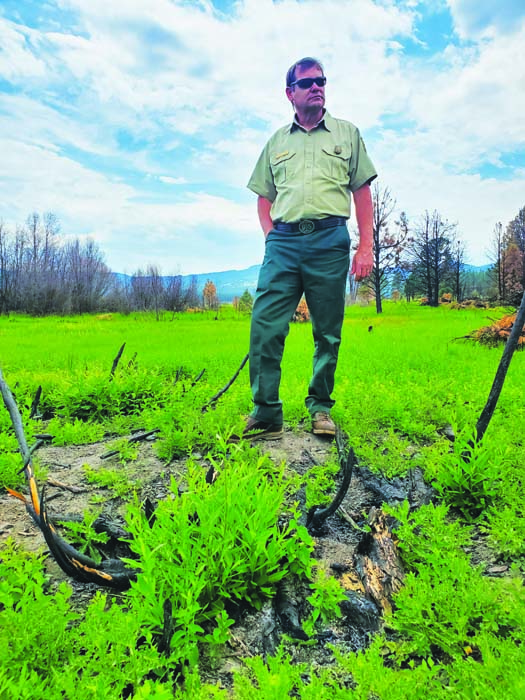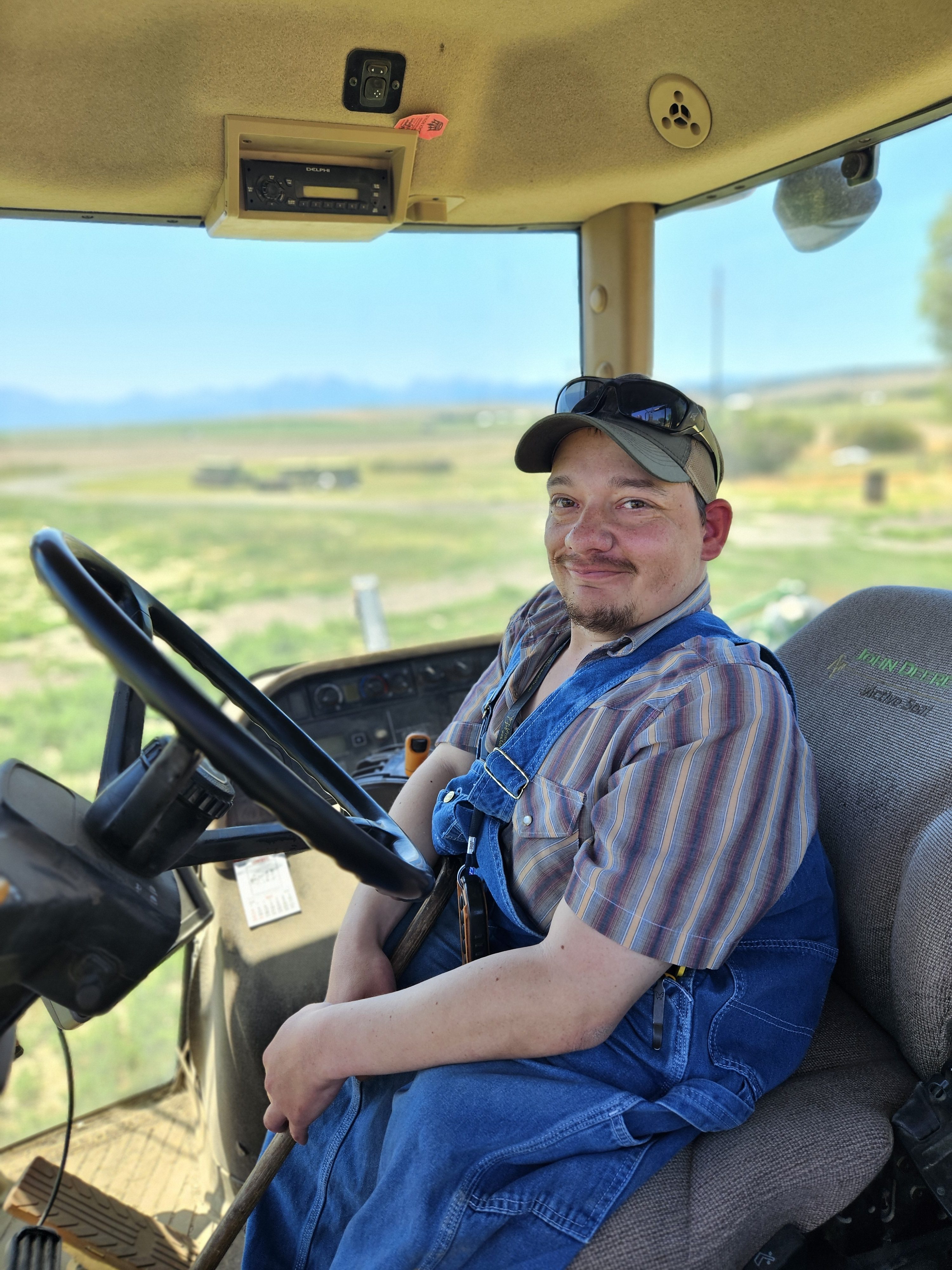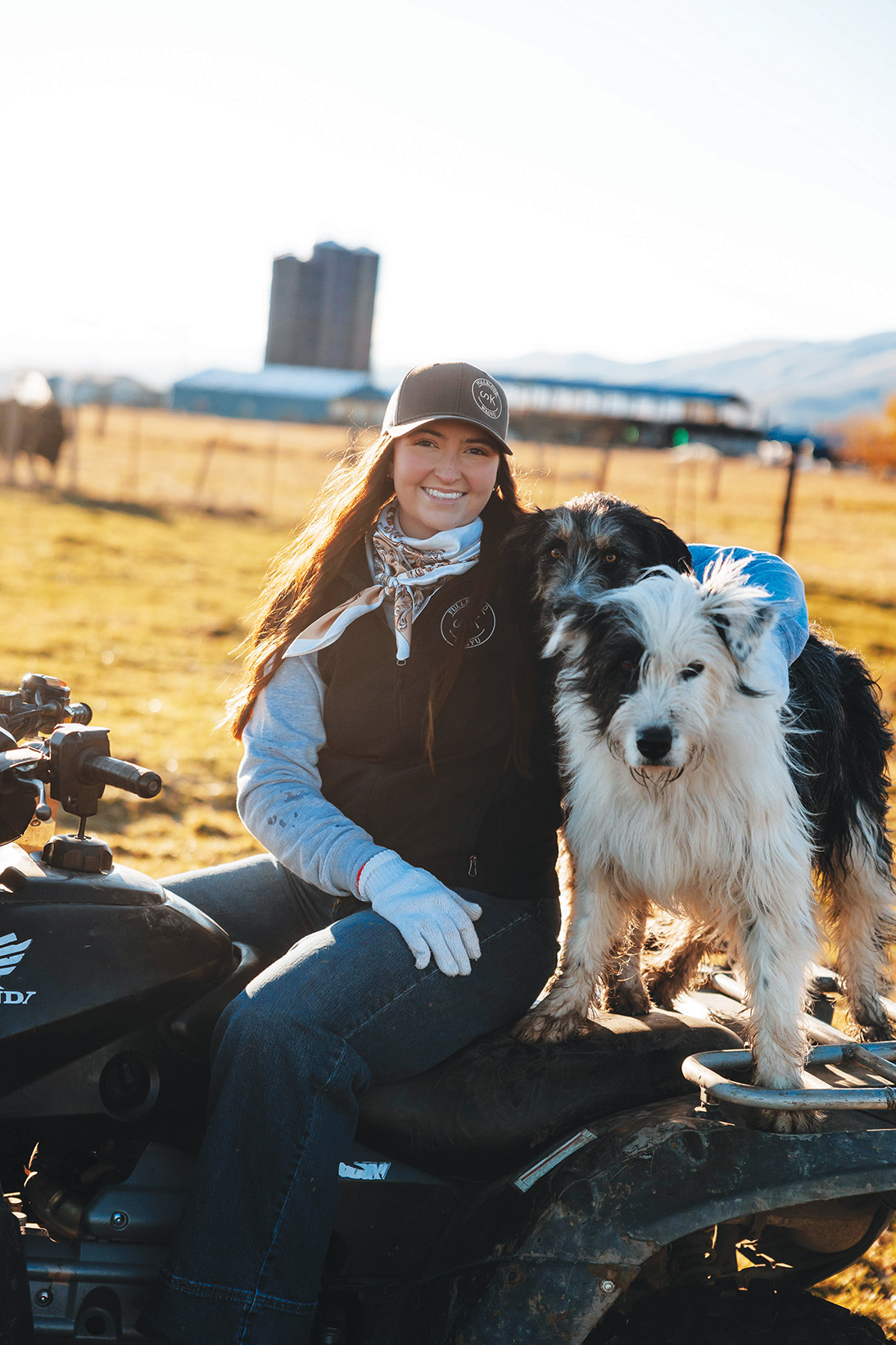Black, Red, Green
Published 3:43 pm Monday, June 28, 2021

- Kendall Cikanek, ranger for the Wallowa-Whitman National Forest’s Whitman District, looks at willow sprouts growing from the charred limbs of a willow tree burned during a prescribed fire on the north side of Phillips Reservoir in mid-April 2021. Cikanek visited the site in June 2021.
Trevor Lewis is standing beside the black skeleton of what used to be a willow tree, and he knows how it looks.
Trending
It looks bad.
Dead.
For drivers whizzing past at 55 mph on Highway 7, just a few hundred feet north of where Lewis stands beside Deer Creek, the charred limbs of the creekside willows, and the rusty orange needles of some nearby ponderosa pines, are conspicuous.
Trending
But it’s a different color that draws Lewis’ eyes, and those of his companions and fellow U.S. Forest Service employees — Kendall Cikanek, Steve Hawkins and Keith Dunn — on the hot afternoon of June 22.
Green.
That shade is widespread in this meadow between the highway and Phillips Reservoir, the latter scarcely visible, so shrunken it is by severe drought.
Lewis thrusts his arm into a spray of green foliage that’s bursting from a patch of black ground.
This is a willow too.
A new willow, fresh as lettuce plucked from a garden, and about knee-high on Lewis’ tan pants.
Its flexible shoots and lance-shaped leaves have risen from the ash since flames swept through here almost two months to the day.
That was no ordinary fire.
Lewis, who most often tries to douse flames as an assistant fire management officer for the Wallowa-Whitman National Forest’s Whitman Ranger District, was on that April day in charge of kindling fires.
And today he and the others have returned to have a look at the early results of their handiwork.
During two days in mid-April, Lewis oversaw the crews that lit prescribed fires that covered about 1,100 acres, mainly on the north side of the reservoir but also a section on the south side, near the Forest Service’s Southwest Shore campground.
The fires had multiple purposes. A primary goal was to remove accumulations of dry, dead grass and layers of desiccated pine needles, Lewis said. That combustible debris could fuel a wildfire during summer, when flames would be much more difficult to control than the April blazes, which were ignited while the ground was moist and a few snowdrifts still lingered in sheltered clefts among the pines.
Although the April fires were intended to protect the mature, second-growth pines that predominate in these relatively low-elevation forests — Phillips Reservoir is at about 4,100 feet — the blazes were also supposed to kill some trees, said Hawkins, fire staff officer for the Wallowa-Whitman.
The “prescription” for the fires — a list of the goals that managers hoped to achieve — included killing from 30% to 70% of the “regeneration,” Hawkins said.
Those are the seedlings and saplings growing among the bigger pines, some of latter being 18 inches or more in diameter.
A century and more ago, before the Forest Service and other agencies started aggressively fighting wildfires, few of those little trees likely would have survived much beyond the seedling stage, Hawkins said.
That’s because fires, most of them started by lightning, swept through the forests approximately every seven to 15 years, he said — an estimate based on studies of the fire scars left on old pines in other areas with similar characteristics.
Those historical fires posed little threat to big ponderosas with their thick bark, Hawkins said. They were also protected by their lack of limbs for the first 30 or more feet of trunk, depriving flames of a “ladder” to climb, spreading fire into the trees’ more vulnerable crowns. Those past fires had similar effects to modern prescribed fires, in that they generally stayed on the ground or close to it, devouring ground fuel but sparing the larger trees.
By largely excluding fire from these forests for much of the 20th century, the Forest Service and other agencies allowed younger trees to grow in much greater density than in the past. In some areas this understory of smaller trees are mainly firs, but around Phillips Reservoir most of the conifers, both young and older, are ponderosas. Regardless of species, these smaller trees can serve as those ladder fuels that threaten even the tallest tree.
The agency has over the past 30 years or so started to try to reverse these effects, and prescribed fire has been one of its primary tools, said Cikanek, ranger for the Whitman District.
For some areas north of Phillips Reservoir, this April’s fires were the third since the early 1990s.
“When you skip a century, it takes a few steps to get back,” Cikanek said.
But there is the matter of those reddish-orange needles, so distinct amid the green backdrop.
Cikanek said he’s pleased to see that the April fires killed many of the smaller pines. Removing these trees, along with the surface layers of grass and pine needles, will reduce the severity of any summer wildfire that starts here, he said.
Hawkins agreed.
“Over the course of my career, my tolerance for red trees is a lot more than it used to be,” he said.
But Cikanek acknowledges that the April blazes also scorched, in some cases likely lethally, some mature pines.
Cikanek said the prescription for the fires called for up to 10% mortality among older trees. The actual death toll will be well below that level, he said.
Some trees with reddened needles will survive, Lewis said.
Many of these trees didn’t actually burn, he said — the discoloration was caused by radiant heat from the flames below. Trees that still have green needles for the top 25% or so of the crown probably will survive, Lewis said. He concedes that this year’s severe drought will increase the mortality rate, however.
On June 22, while walking among the pines near Mowich Loop, the Wallowa-Whitman picnic area beside Highway 7, Lewis pointed to scorched trees that already have new green needles.
Deer Creek flows a few hundred yards east of the picnic area.
The stream, which heads high in the Elkhorn Mountains, was lined with willows and alders. The April prescribed fire, spurred by gusty winds, burned hot here.
That’s not surprising, Lewis said.
The creekside willows and alders had become “decadent,” he said — a term in this case meaning the thickets had a lot of old, dead wood and relatively fewer new, succulent shoots.
Although the fire left those unsightly black skeletons, Lewis said those are only the remnants of that dead wood.
Many deciduous trees, including water-loving species such as willows and alders, are invigorated by fire.
As proof, he points to the expanse of knee-high, glossy green willow shoots that line Deer Creek.
“Disturbance is what causes the flush of new growth,” Cikanek said.
The April fire also spread through a grove of aspen just east of the Mowich Loop parking lot.
Lewis said that within three weeks of the fire, aspen shoots were standing three inches tall in the grove.
South of the reservoir
Lewis strolls into the pine forest just west of the Forest Service’s Southwest Shore campground.
The situation is quite different here than it is north of the reservoir.
A wildfire in the late 1980s killed most of the pines near the campground, and the Forest Service planted ponderosa seedlings.
Lewis said this younger forest can still benefit from prescribed fire, most notably the reduction in the fuel load on the ground.
On the north side of the reservoir these small trees are part of the understory that prescribed fire is supposed to thin out.
But here, near the campground, almost all the trees are small, and they need to be protected. To that end, prior to the prescribed fire, workers pruned the lower limbs that could serve as ladder fuels, Lewis said.
He said similar work — pruning followed by prescribed burning — is planned along the Forest Service road that runs along the south side of the reservoir and leads to both Southwest Shore and Millers Lane campgrounds.
This project not only is intended to reduce the risk of wildfires on the national forest, but also to help protect the many parcels of private property just south of the road.
Union Creek campground
This Forest Service campground on the northeast side of Phillips Reservoir, a mile or so from Mason Dam, is the most popular recreation site in the area. It’s one of a few Forest Service sites in the region that has campsites with electric, water and sewer connections for RVs and trailers.
Hawkins said the Wallowa-Whitman has undertaken multiple projects since the 1990s to reduce the wildfire risk in the campground, including thinning the pines and lighting prescribed fires.
Lewis said the campground is the last area that was ignited on April 15, the first day of prescribed burning, and for a couple reasons, flames didn’t spread as rapidly as other areas.
First, the humidity was a bit higher later in the day.
Second, the forest floor inside the campground has comparatively less fuel, a situation Lewis explains with a chuckle.
“It’s a campground, and every little kid picks up sticks for a campfire,” he said.
Kids also roam among the pines.
Although the prescribed fire burned before the campground had opened for the season, campers who arrived saw patches of black ground and pines with reddened needles.
Cikanek said he understands that burning in a campground — even a controlled fire that’s intended to protect the place from devastating wildfires — can bother some visitors.
Aron Grief isn’t among those.
Grief, who lives in Molalla, southeast of Portland, was walking to the campground’s fish-cleaning station with a stringer of rainbow trout when he passed the group of Forest Service employees looking at the forest.
“Are you going to do more burning?” Grief asked. “I know why you did it.”
Cikanek told Grief that there wouldn’t be any prescribed fires during summer, what with the higher fire danger and the campground being open.
Grief said he appreciates that the Forest Service is trying to reduce the fire danger in the campground. He pointed out the clumps of Idaho fescue, a native bunchgrass, growing where the flames were two months ago.
“It’s green,” Grief said.
While driving through the campground on the way back to Highway 7, Hawkins stops the Forest Service pickup truck to have a look at a clump of bitterbrush, a shrub that is an important source of winter forage for deer and, to a lesser extent, elk.
In common with deciduous trees and certain grasses, bitterbrush is invigorated by fires of relatively low severity, such as prescribed fires, Hawkins said.
He examines a patch of bitterbrush that burned in the April fire.
At the base of the blackened shrub he points to green shoots a few inches tall.
That new growth will be palatable to deer and elk, Hawkins said, and more accessible to the animals than the spiny, thick-limbed shrub that burned.









